Laser Vision
NanoRelex vs. NanoLASIK: A Comparative Guide to Bladeless LASIK Technologies
NanoRelex vs. NanoLASIK: A Comparative Guide to Bladeless LASIK Technologies
Introduction: When it comes to treating vision issues with LASIK, two cutting-edge methods have emerged: NanoRelex and NanoLASIK. In this comprehensive guide, we'll delve into the distinctions between these two advanced LASIK technologies.
NanoLASIK: Elevating LASIK with Nanojoule-Level Energy Technology LASIK, short for Laser In Situ Keratomileusis, is a groundbreaking procedure that effectively corrects a range of eye conditions, such as myopia, hyperopia, and astigmatism. In the conventional LASIK process, a microkeratome blade is employed to create a corneal flap, which is lifted like a window. Subsequently, an Excimer Laser is utilized to reshape the mid-corneal layer, achieving the desired visual correction. The corneal flap is then repositioned without sutures, naturally adhering. However, NanoLASIK sets itself apart by eliminating the need for a microkeratome blade in corneal flap creation. Instead, it utilizes a laser, ensuring precision, safety, and expedited healing. Furthermore, NanoLASIK employs a laser that operates at an incredibly low nanojoule energy level, leading to reduced eye irritation and faster recovery.
NanoRelex: The Pinnacle of Minimally Invasive LASIK NanoRelex represents the latest LASIK technology tailored to address myopia and astigmatism. This method harnesses the power of Femtosecond Laser technology to modify corneal tissue. The excess corneal tissue is gently removed through small incisions, measuring a mere 2-3mm, all without the use of a microkeratome blade. This characteristic makes NanoRelex a bladeless and gentle alternative for vision correction. Additionally, the small corneal flap created during NanoRelex minimizes the risk of post-treatment dry eyes.
Comparison Between NanoLASIK and NanoRelex:
Applicability: NanoLASIK caters to myopia, hyperopia, and astigmatism, while NanoRelex is primarily designed for myopia and astigmatism.
Bladeless Technology: Both NanoLASIK and NanoRelex are considered bladeless LASIK procedures that utilize Femtosecond Laser technology, delivering surgeries at minimal nanojoule energy levels.
Procedure Focus: NanoLASIK centers on creating a corneal flap, while NanoRelex alters corneal tissue using a laser, circumventing the necessity to open and close the corneal flap.
Conclusion: Selecting the most suitable LASIK surgery method hinges on individual eye conditions and the guidance of a seasoned eye specialist. Prioritizing eye health is paramount in making the right decision for vision correction.
Laser Vision
NanoLASIK: Revolutionizing Vision Correction for Swift Recovery
NanoLASIK: Revolutionizing Vision Correction for Swift Recovery
If you're grappling with vision problems and have opted for LASIK, NanoLASIK, the latest Swiss innovation, could be the game-changer you're seeking. With nanotechnology at its core, NanoLASIK promises a quick recovery, ensuring you swiftly regain clear vision. When it comes to vision issues, eyeglasses and contact lenses are common remedies. However, they can be inconvenient, leading to situations like misplacing your glasses or experiencing discomfort with contacts. This is where LASIK, a vision correction procedure, shines as a long-term solution for significantly improving your eyesight.
Understanding LASIK:
LASIK, short for Laser In-Situ Keratomileusis, is a medical marvel using laser technology to correct various vision problems, including myopia, hyperopia, and astigmatism. It's known for its convenience, safety, and rapid results. LASIK comes in different variants, but generally, LASIK refers to a method that involves creating a corneal flap with a microkeratome blade and then using an excimer laser for precise corneal reshaping. The flap is repositioned afterward.
Decoding FemtoLASIK:
FemtoLASIK, or Femto for short, is an advanced vision correction technique that replaces the microkeratome blade with femtosecond laser technology for corneal flap creation. Subsequent steps involve employing an excimer laser for corneal reshaping, offering superior precision throughout the process and usually requiring a short recovery period of 2-3 days.
Introducing NanoLASIK:
NanoLASIK is the latest milestone in vision correction, building upon the advancements of FemtoLASIK. NanoLASIK utilizes low-energy nanosecond lasers with nanometer-level precision, augmented by artificial intelligence (AI) systems to prevent corneal movement. This groundbreaking approach eliminates the need for excessive corneal tissue removal, making it ideal for individuals with higher degrees of myopia. What's more, NanoLASIK prioritizes patient comfort and recovery, with most individuals experiencing a rapid, one-day recovery. This cutting-edge technology offers a renewed and clearer world, granting individuals the freedom to resume their regular activities, all under the care of experienced medical professionals.
ဆေးရုံတည်နေရာ
Laser Vision International LASIK Center
10/989 Soi Prasertmanukij 33 Nuanchan Buengkum District Bangkok 10230
